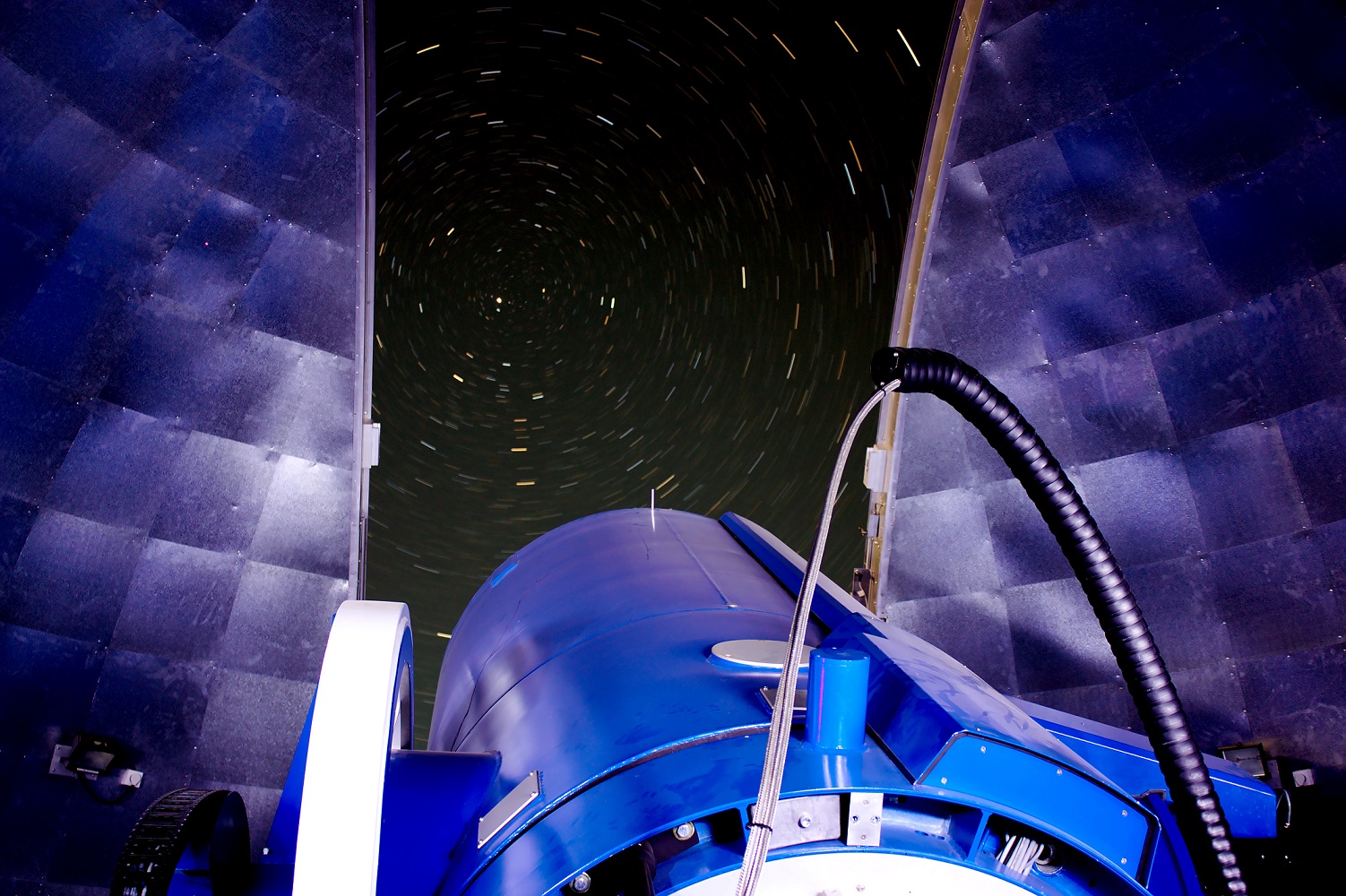Thanks to the technology developed by the Institute of Astronomy and the high-performance Belnet connection, (future) astronomers will be able to continue their research from 3,000 kilometres away during the COVID-19 crisis. Belnet spoke with Prof. Hans Van Winckel, Head of Astronomy at the KU Leuven.
The Institute of Astronomy has about 80 employees and is affiliated with KU Leuven. Scientific research and education are the Institute's core tasks. “Much of our research focuses on stellar astrophysics. We not only use the results of this in our educational activities. Our research is very technology driven and also serves to develop new tools with which we can further improve our research,” explains Prof. Van Winckel.
Mercator
The showpiece of the Institute of Astronomy is undoubtedly the 1.2 m Mercator telescope, which is located at an altitude of 2,396 metres on La Palma. This location has not been chosen by chance: the Canary Island is considered the best place in Europe for astronomical observations.
“Working with the Mercator telescope is an integral part of the Astronomy course at KU Leuven. The telescope offers our future astronomers a unique opportunity to gain hands-on experience,” explains Prof. Van Winckel. “Another advantage of the Mercator telescope is that it allows us to track systems over several years. That gives us unique datasets.”
Observation time, the time allotted to astronomers to make observations, is very much in demand. “One night of observation has a value of €50,000 at the large telescopes of the European Southern Observatory (ESO). The demand for observation time exceeds the supply by a factor of 6. Observation at ESO is therefore only done for very specific and usually short, intense observation campaigns. At our own Mercator telescope, this is fortunately a lot cheaper and that allows us to organise long measurement campaigns. Moreover, each observer can devote 20% of their observation time to their own experiments. This is how we stimulate new research. The remaining time goes towards specific research projects that are running for a long time.”

The Mercator telescope on La Palma - © P.I. Pápics
Impact of coronavirus
At the beginning of the coronavirus crisis, the observatory on La Palma was completely closed. “So we had to modify our installation so that we could still observe, but from Leuven. We implemented additional safety measures quite quickly, such as the automatic closure of the dome in bad weather,” explains Prof. Van Winckel. Moreover, travel was forbidden during plots, which prevented the scientists at the Institute of Astronomy from making observations at the site.
“Fortunately, three IT people affiliated with our Institute were already developing an operating system. They completed its security in March, and in mid-April, we were able to start the testing phase. A virtual machine ensures that the local screen is ‘copied’ to the KU Leuven. The system has been fully operational since June.”

The Mercator telescope on La Palma - © Institute of Astronomy (KU Leuven)
Still gaining practical experience
Thanks to this ‘remote control’, the astronomers at KU Leuven can operate the Mercator telescope as though they were on La Palma. “Although you can better assess the weather conditions on site, the operating system also offers a lot of advantages. Normally, our astronomers go to La Palma for 10 nights during their course. Thanks to the remote system, they were able to gain practical experience despite the travel ban.”
What's more, astronomers operating the Mercator telescope remotely have a special experience waiting for them. At some point, it will already be light in Belgium, while it is still dark on La Palma.
The data generated is synchronised with the servers at the KU Leuven in the morning. Some of the images are sent immediately, so the observer can check whether the quality is good. “In the observations so far, the grid connection was very good. There is only a fraction of a second's delay, so we have almost the same quality of interaction as on site.”
Meanwhile, on-site observations are allowed again, but the situation may change rapidly depending on the further evolution of the coronavirus and the associated travel restrictions. “I expect observing to become a combination of remote and on-site in the future anyway,” says Prof. Van Winckel.
Wonderful plans for the future
In the future, the Institute of Astronomy intends to further optimise its large observation projects and improve its technological instruments. Furthermore, the research centre is working on the development of 4 smaller telescopes, for which the Mercator telescope can serve as a test case.
Currently, the Institute is also working, within the framework of a European consortium, on the instrumentation for a brand-new 39 m telescope in Chile, to be built by the European Southern Observatory. “Our contribution to the project will then be converted into telescope time, allowing us to further expand our research assignment,” concludes Prof. Van Winckel.